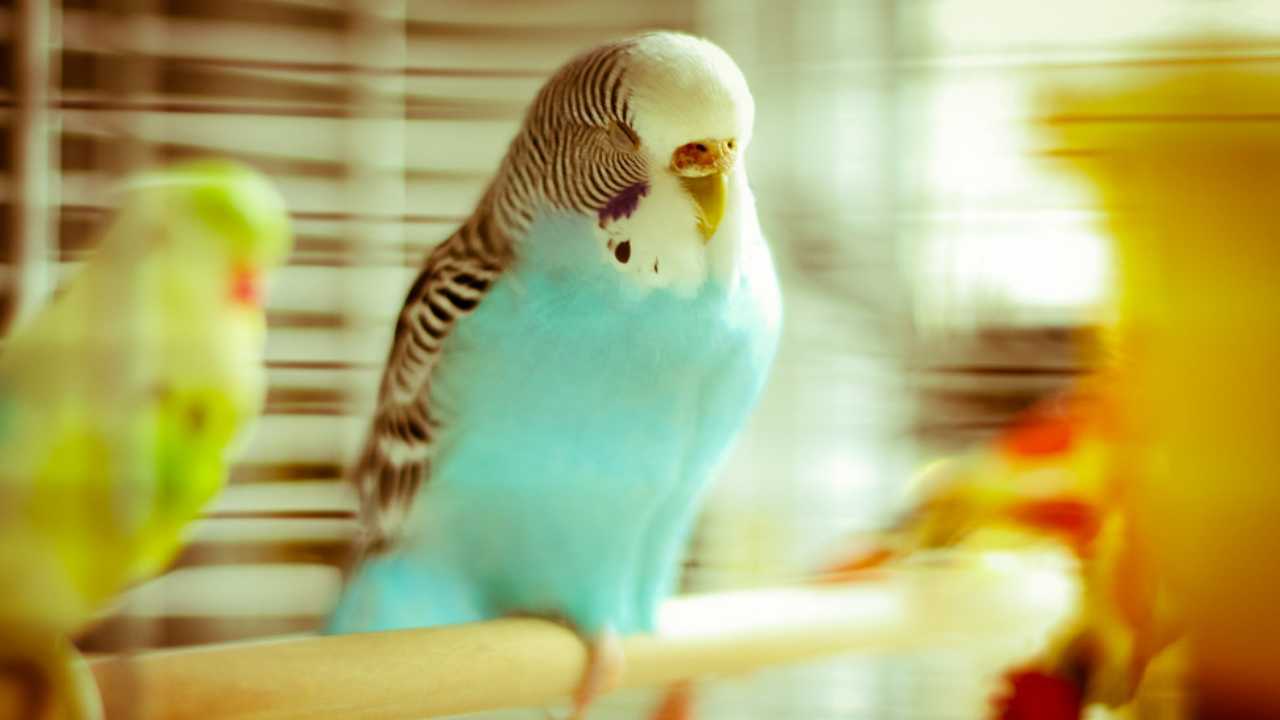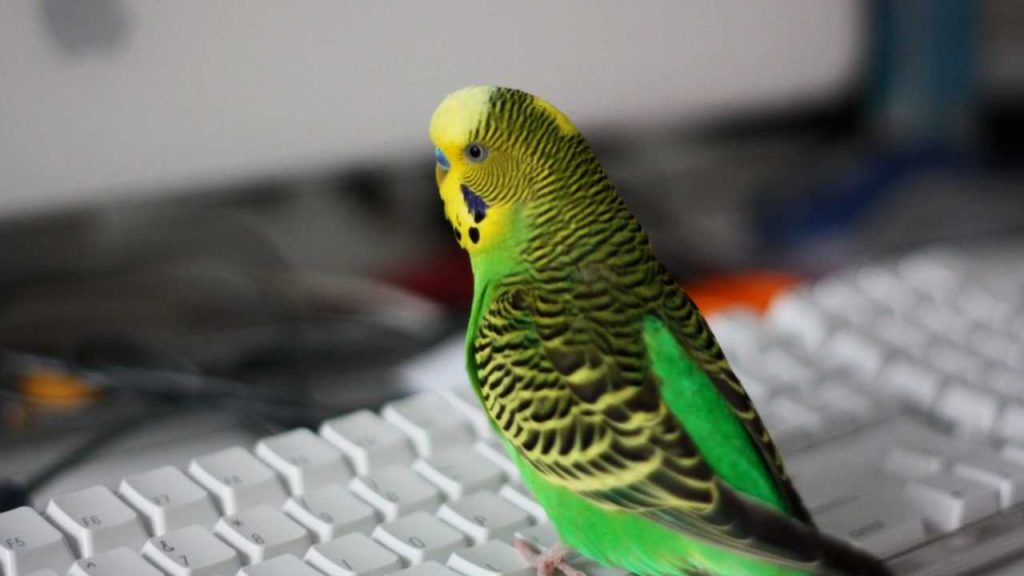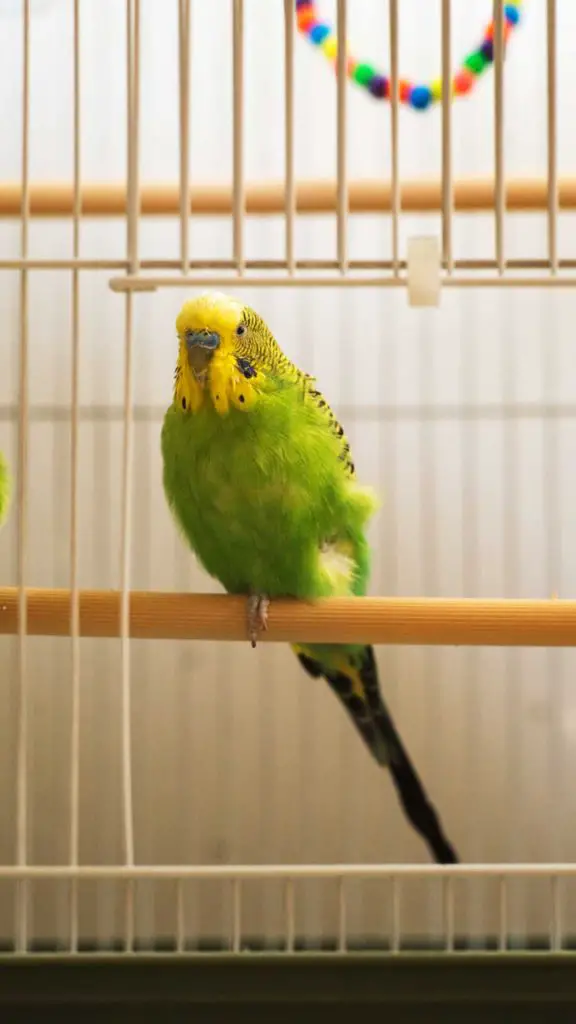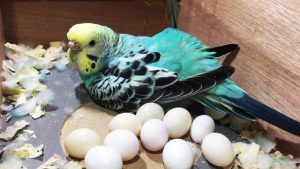Why Does My Budgie Stand On One Leg? Explaining Weird Bird Behavior

Have you ever wondered why your budgie stands on one leg? If you’re a budgie owner, you may have noticed this peculiar behavior at some point.
Don’t worry, this is a common and natural behavior observed in budgies, and there are various reasons why your feathery friend might exhibit this stance.
One primary reason for your budgie to stand on one leg is to conserve warmth. By lifting one foot and tucking it up under its feathers, your budgie shares body heat with the limb and relies on its heavy feathers as insulation.
Also, standing on one leg can indicate that your budgie is tired and resting, as rotating its feet periodically allows each foot a chance to rest and recover.

It’s important to note that if your budgie displays any signs of illness or injury, such as lethargy, decreased appetite, or unusual behavior, alongside standing on one leg, it’s essential to consult with a veterinarian. In such cases, this stance could be a sign of an underlying issue that requires professional attention.
Table of Contents
Understanding Budgie Behavior
Natural Behavior for Birds
Budgies, like many other birds, exhibit a variety of natural behaviors that can sometimes seem puzzling to you as their caretaker. One of these behaviors is standing on one leg, also known as the unipedal posture. This balancing act is not limited to budgies or parakeets but is a common habit in the avian kingdom.
Balancing and Muscle Rest
When your budgie stands on one leg, it is actually practicing a balancing posture that allows it to rest its muscles. This behavior helps the bird save energy and allows it to quickly change direction or react if needed. It may look uncomfortable to you, but rest assured that the bird’s feet are specially adapted with ligaments to make this a comfortable position. Budgies alternate between legs while maintaining this posture to give each leg a chance to relax.
Body Temperature Regulation
Another reason your budgie chooses to stand on one leg is to regulate its body temperature. According to the Journal of Avian Biology, by lifting one foot and tucking it up under its feathers, a budgie is able to share body heat with the limb. This is especially important in colder weather when birds rely on their heavy feathers for insulation.
Sleeping and Relaxation
Budgies also stand on one leg while sleeping or resting after a tiring day, balancing comfortably with their special foot ligaments. During these moments of relaxation, you might notice your budgie chirping softly, a normal aspect of their natural behavior.
So, the next time you see your budgie standing on one leg, remember that this is a natural and healthy behavior that has a variety of purposes, from muscle rest to body temperature regulation.
Health and Well-Being

Common Causes of Discomfort
Your budgie may stand on one leg for various reasons, mostly related to finding comfort and rest. One common reason is to conserve energy by using less effort to maintain balance, which also allows them to stay alert. Another reason for budgies standing on one leg is to keep themselves warm, as they are sensitive to cold temperatures. They tuck one leg up to preserve body heat, and they may alternate legs to provide rest to the other leg.
Recognizing Signs of Injury or Illness
Although standing on one leg can be a normal behavior for budgies, it’s essential to keep an eye on your budgie for any signs of discomfort, injury, or illness. Here are some key indicators to watch for:
- Lethargy: If your budgie seems less active than usual or shows decreased energy levels, it might be facing an issue.
- Decreased appetite: A sudden change in your budgie’s eating habits may be indicative of an underlying health problem.
- Unusual behavior: If your budgie starts behaving differently than their normal routine, take note.
If you observe any of these signs alongside your budgie standing on one leg, it’s essential to consult an avian vet immediately. The vet can determine if any underlying health issues need attention, such as nerve damage, a stroke, or an injury affecting your budgie’s joints.
Remember that maintaining your budgie’s health and well-being is crucial to ensure they feel safe and comfortable. Be attentive and proactive in addressing any signs of injury or illness to provide the best possible care for your feathered friend.
Creating a Comfortable Environment
Perches and Toys
To create a comfortable environment for your budgie, start with their cage. Ensure it’s spacious enough for them to move around and fly short distances comfortably. Remember to provide a variety of perches with different thicknesses and materials, as this helps to promote healthy feet and offers diversity. Natural branches and textured perches are excellent options.
Add toys that encourage mental and physical exercise, such as puzzle toys, swings, and ladders. Rotate the toys regularly to keep things fresh and engaging for your budgie. Always make sure everything in the cage is budgie-safe, with no sharp edges or small parts that could cause harm.
Music and Sound
Budgies, like many other birds, enjoy sounds and music. Regularly playing soft music or bird sounds can create a soothing environment for your feathered friend. However, be mindful of volume levels and the type of music you choose. Avoid loud noises or music genres that could potentially stress your budgie.
Creating a comfortable environment is essential for maintaining your budgie’s health and happiness. By providing proper perches and toys and creating a pleasant soundscape, you’ll help your budgie feel at ease as they stand on one leg, conserving energy and comfortably resting in their home.
Maintaining Budgie Health and Preventing Issues
Diet and Nutrition
A healthy diet plays a crucial role in keeping your budgie in a comfortable position. Provide them with a balanced diet consisting of seeds, fruits, and vegetables to ensure they receive essential nutrients. Calcium and vitamin D are particularly important for their overall health, as these nutrients help in maintaining strong bones and reducing heat loss.
Consider offering them a high-quality seed mix or pellets specially prepared for budgies, and supplement their diet with fresh fruits and vegetables. Appropriate fruits and vegetables for budgies include apples, bananas, carrots, spinach, kale, and more. Avoid giving them foods high in sugar or unhealthy fats.
To aid in calcium and vitamin D absorption, offer your budgies access to sunlight or a special UV light designed for birds. Sunlight exposure is essential for budgies as it helps in proper calcium and vitamin D metabolism, which ultimately contribute to a healthy budgie.
Exercise and Play
Regular exercise is essential for your budgie’s physical and mental health. Encourage exercise by providing toys and perches of different sizes to help keep them active, entertained, and maintain balance. Ensure they have enough space within their cage to move around and spread their wings. You can also offer opportunities for them to fly outside their cage in a safe, enclosed space.
Playtime not only keeps your budgie engaged but also helps in bonding with them. It enables them to burn off excess energy and stay alert, which contributes to a healthy and happy bird.
Regular Check-Ups
Regular vet check-ups are essential in keeping your budgie healthy and addressing any potential health concerns early on. Monitoring their health closely during their daily activities can alert you to any unusual behaviors, such as standing on one leg, which might indicate an issue.
Remember to schedule regular check-ups with an avian veterinarian to keep a close eye on your budgie’s health, and attend to any issue before it becomes serious. By maintaining a healthy diet, providing opportunities for regular exercise and play, and scheduling regular check-ups, you can ensure your budgie remains comfortable, healthy, and happy.
Frequently Asked Questions
Is it normal for budgies to stand on one leg?
Yes, it is normal for budgies to stand on one leg. They do this primarily for comfort and rest. Their feet have special ligaments that make this standing position very comfortable, and they alternate legs to give rest to the other leg. This behavior also helps them conserve energy.
How can I tell if my budgie has a leg injury?
If your budgie has a leg injury, you may notice signs of discomfort, limping, or favoring one leg over the other. Additionally, they may have difficulty perching, or show signs of swelling or bleeding around the affected leg. If you suspect an injury, consult your vet for further evaluation and treatment recommendations.
What does head bobbing mean in budgies?
Head bobbing in budgies is a normal behavior and can have several meanings. It can be a sign of excitement, contentment, or even just a way for your budgie to exercise its neck muscles. However, if head bobbing is excessive or accompanied by other signs of distress, consult your vet.
What is the significance of a budgie holding its foot up?
A budgie holding its foot up may simply be resting or keeping one foot warm. It is essential to monitor your budgie for other signs of discomfort or injury to ensure this behavior is normal and not indicative of a health problem.
How do I read budgie body language?
To read your budgie’s body language, pay close attention to their posture, feathers, and vocalizations. A relaxed, happy budgie might puff its feathers slightly, while a scared or defensive budgie might have sleek, flattened feathers. Chirping and singing are generally signs of contentment, while hissing or growling can indicate aggression or fear.
Are there any health concerns related to budgies flapping their wings?
Budgies flapping their wings can be a normal, healthy behavior, as it helps them exercise and maintain their strength and coordination. However, if you notice excessive wing-flapping or accompanying signs of distress, such as heavy breathing or discomfort, it could indicate a health concern. Consult your vet if you are unsure about your budgie’s wing-flapping behaviors.










